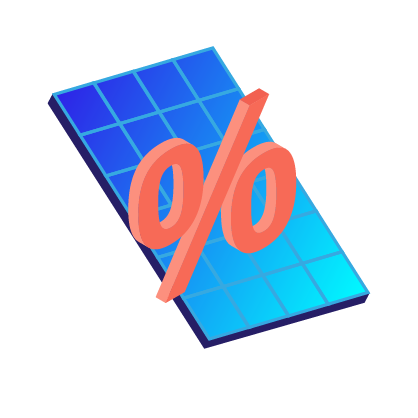The Latest Update in Flexible Solar Cells for Your Smart Devices
As solar increases in popularity across the world, more investments are being funneled into the development of solar cell technology.
The goal is to continually improve solar cell efficiency, while also making these cells durable and applicable to everyday situations like powering your phones, vehicles, clothing, and other smart devices.
One solution that scientists and engineers came up with are solar cells that have the ability to flex and curve around objects. Flexible solar cells, as they are referred to, can be fit to objects and devices that would otherwise not be suitable for a more rigid solar cell like the monocrystalline and polycrystalline cells used in residential and commercial solar panels.
As flexible solar cell technology continues to improve, more consumer options become available. In this post, we will look at some of the latest updates in flexible solar cells for your smart devices.
Where is flexible solar panel technology today?
There are several flexible solar cell products that are currently on the market for consumers to purchase. One great example of this technology is SunPower’s flexible panels.
These panels are lightweight and portable, which allows you to take them with you on the go. Portability is a huge value proposition for flexible solar cells, especially since they are not nearly as practical for use on your home like the more rigid panels are.
SunPower’s 110-watt flexible panels weigh 5 pounds, are 46 inches in height, and 22 inches in width. They are used to charge portable batteries, which can then be used to power or charge any compatible device.
This type of flexible panel uses high-efficiency, ultra-thin silicon wafers that are stacked upon each other to make up the photovoltaic cell. Although SunPower’s Maxeon solar cells may be superior in quality to other cells, this category of ultra-thin silicon panels has existed for several years.
The Latest Developments in Flexible Solar Panels
There are new advances in flexible solar panels being made all the time, but the most prevalent problem that arises from this research and development is a question of how to convert these discoveries into a viable commercial product.
Scientists from around the world are working on this problem to help move this technology forward. There are two main issues that the current form of flexible solar panels encounter: 1) The cost of production, and 2) The lifespan of the modules.
- Cost of Production – To decrease the cost of production, flexible solar panels must be manufactured through roll-to-roll processing, which means that they must be produced on a flexible plastic or metal foil that can be rolled up. One method to accomplish this is through ink-jet printing, which would allow the dye and electrolyte components to be inserted into the foil.
- Module Lifespan – It is important that the amount of energy a flexible solar cell produces in its lifespan is greater than the amount needed to produce and transport the solar cell itself. If this wasn’t the case, then the solar cell in question could not be considered a renewable resource. The rigid nature of silicon-based solar cells makes it more prone to damage when curved. To solve this, new materials are being experimented with to manufacture solar cells that can withstand these conditions easier.
One example is the flexible, transparent and organic solar cells being developed by MIT. The MIT researchers involved in this project developed these cells using graphene that can easily attach to almost any surface. A 1-atom layer of graphene electrodes is combined with organic (carbon-containing) materials to produce these transparent and durable solar cells.
The coolest part of these solar cells is that they can be fit onto things like clothing, phones, bicycles, stop signs, sidewalks, and almost anything else you can think of. Unfortunately, it will still take some time before we see this form of technology adopted on a large scale.
A Flexible Future for Solar
It seems that the future of solar technology is naturally leading towards flexible photovoltaic cells. Flexible solar cells bring many benefits, namely increasing the number of devices, objects, and surfaces that can be converted into a source of renewable energy.
If we want a future where almost any available space can passively generate solar energy, then we need technologies like this on the market. Keep your eyes open for new advances being made in this area. If you’re interested in learning more about (rigid) solar for your home, get in touch with one of our energy advisors!
Cover image source: infinityPV











